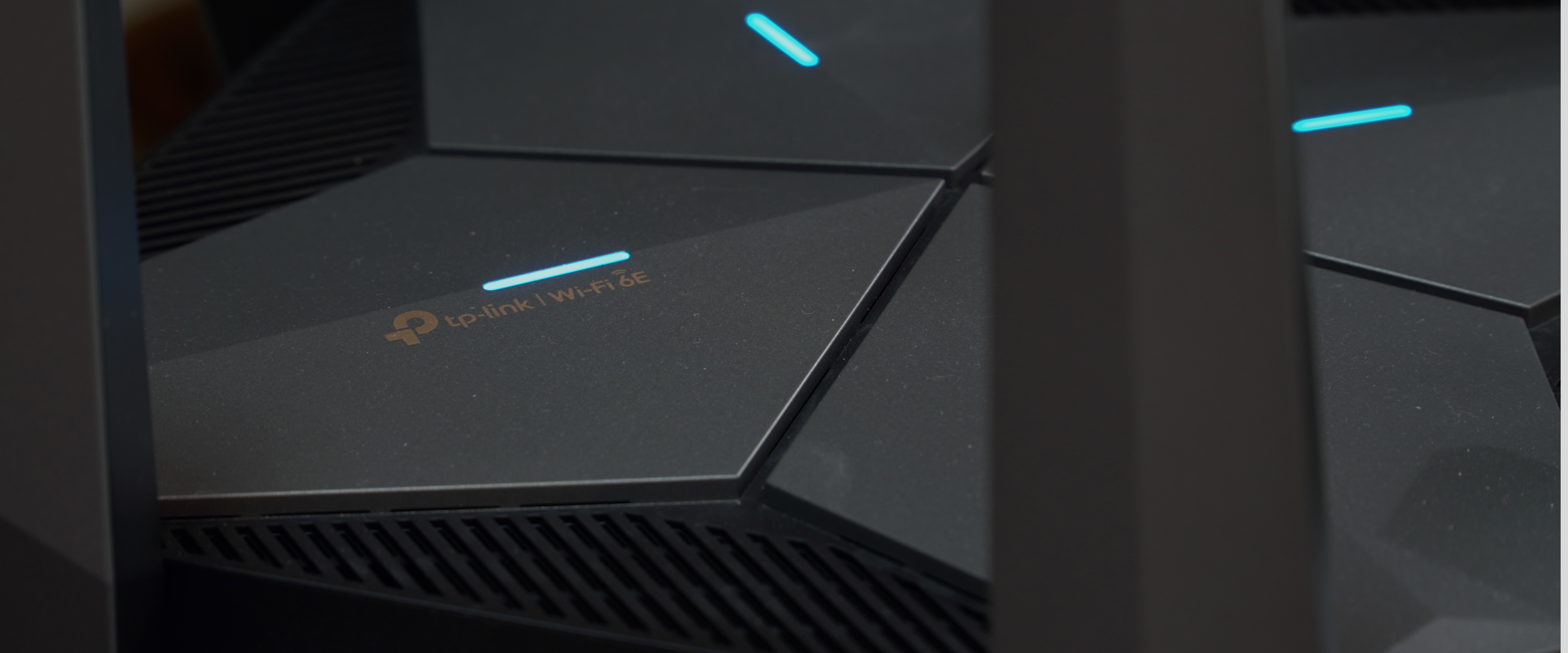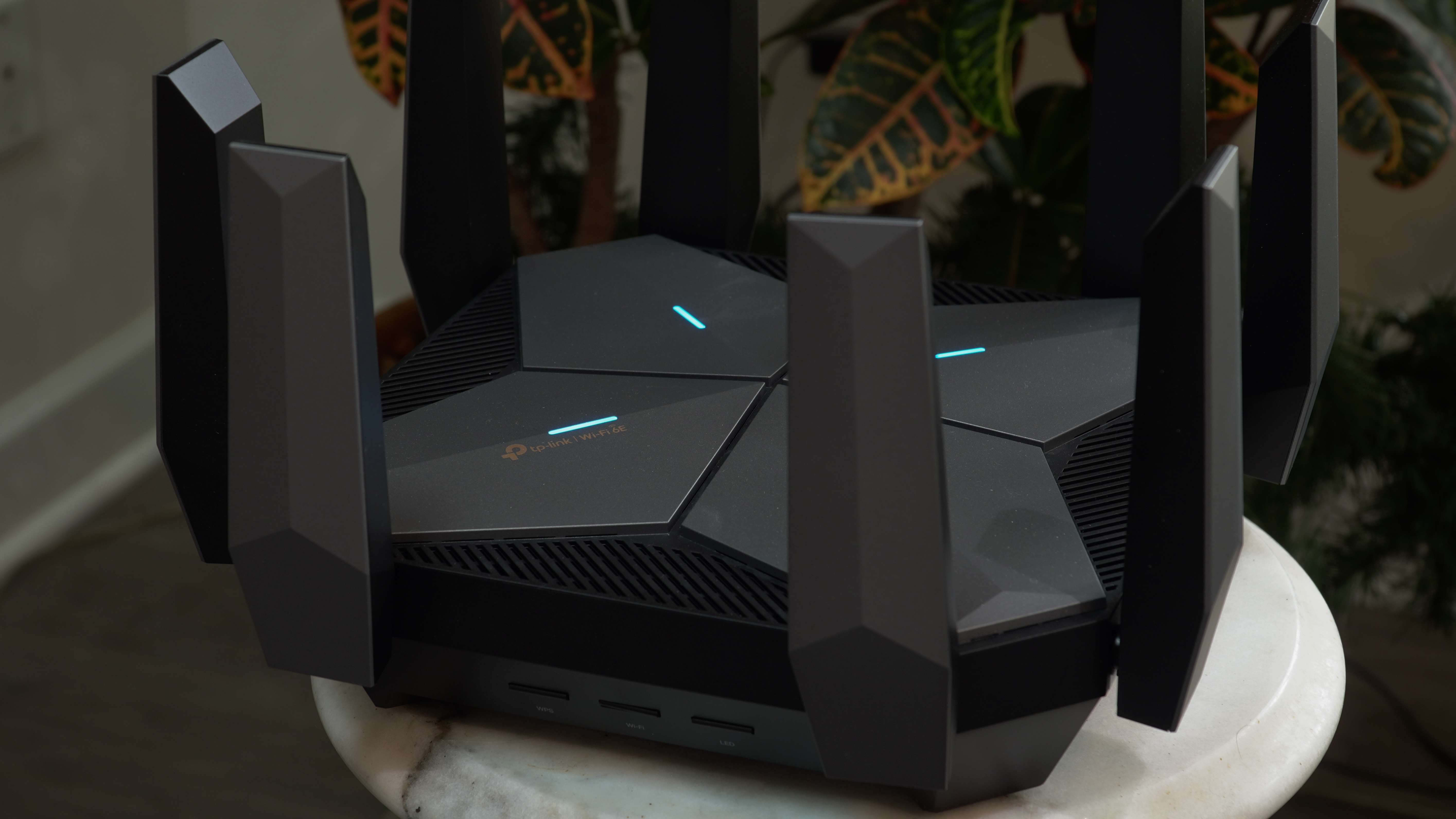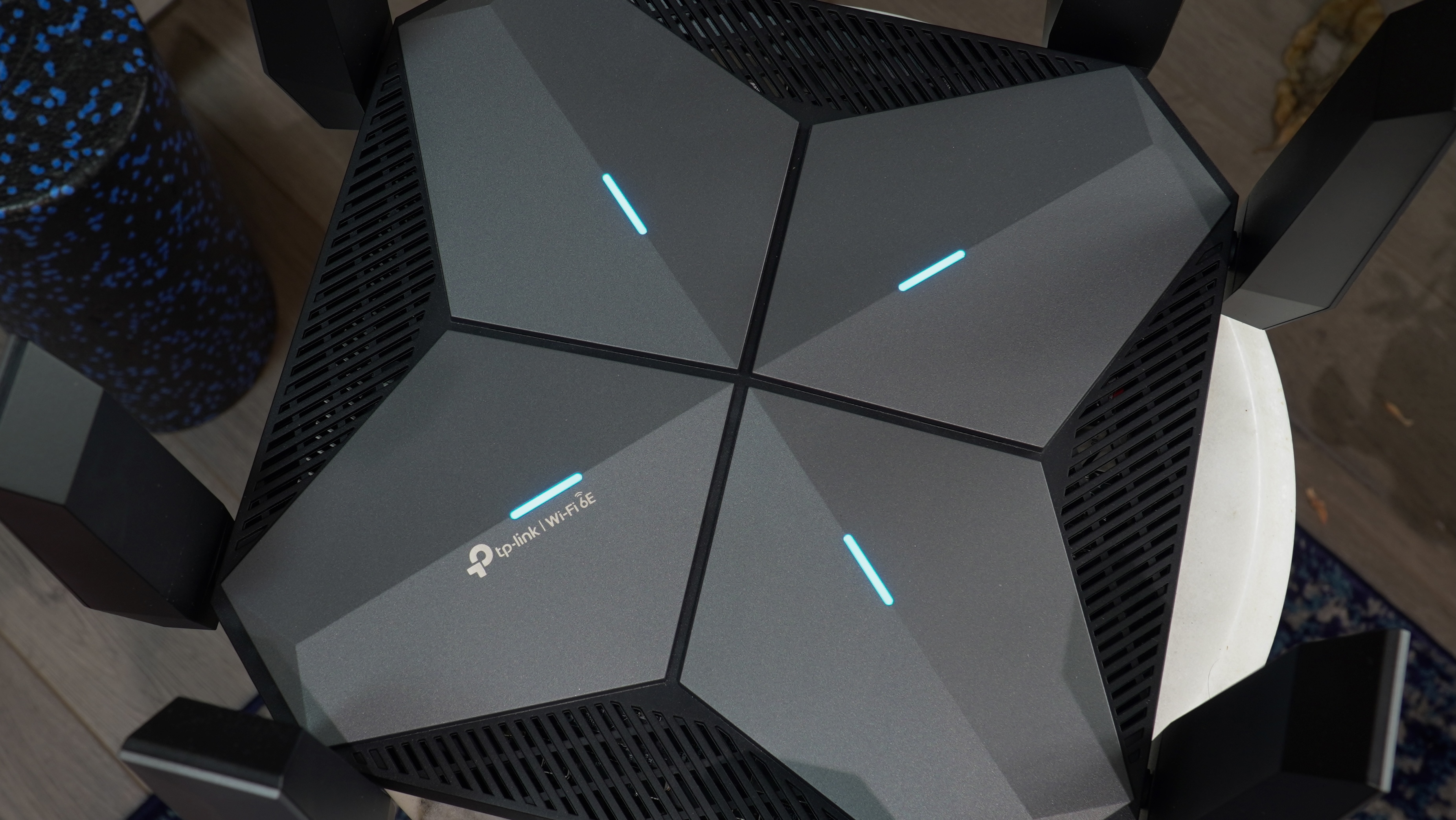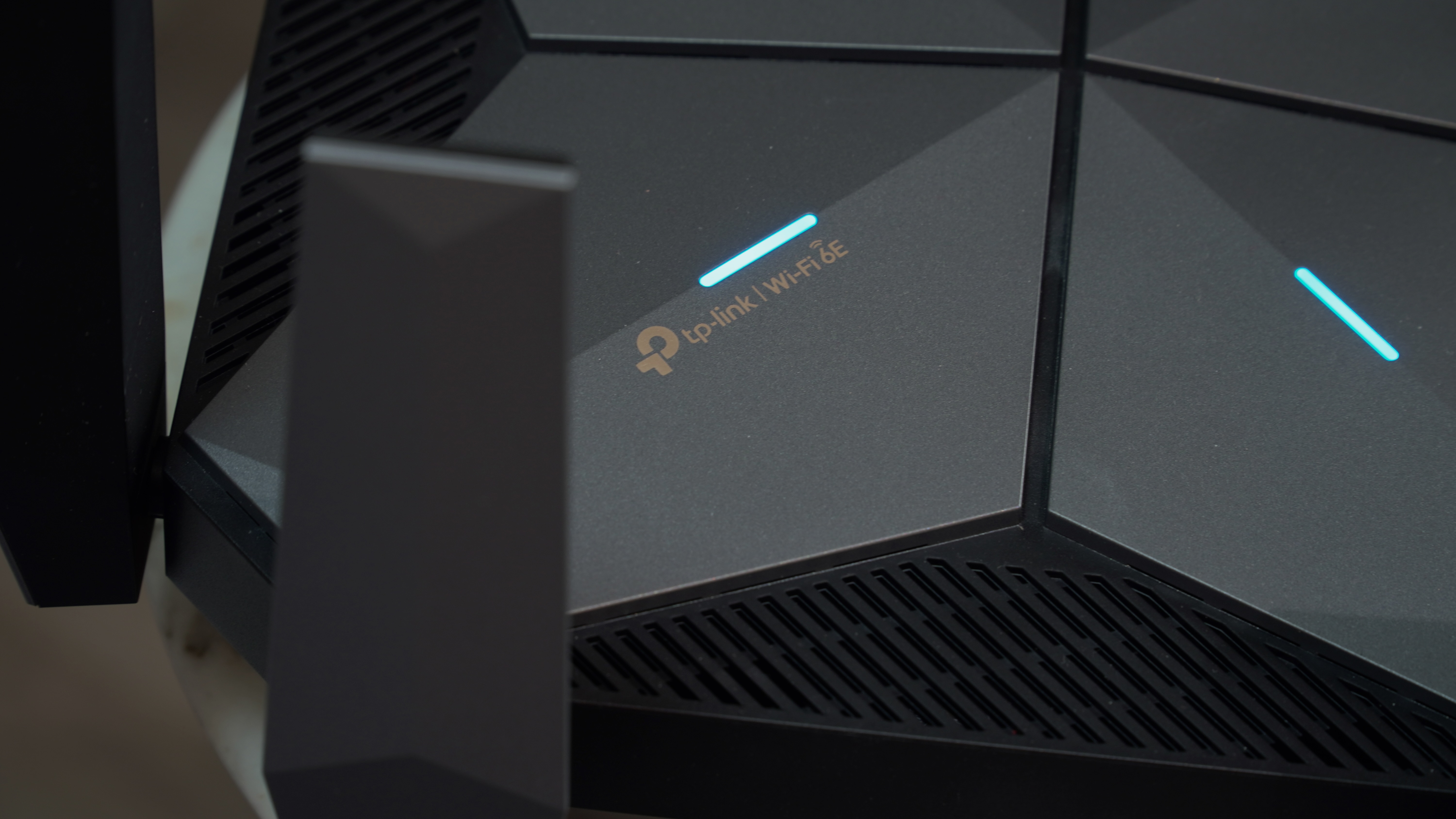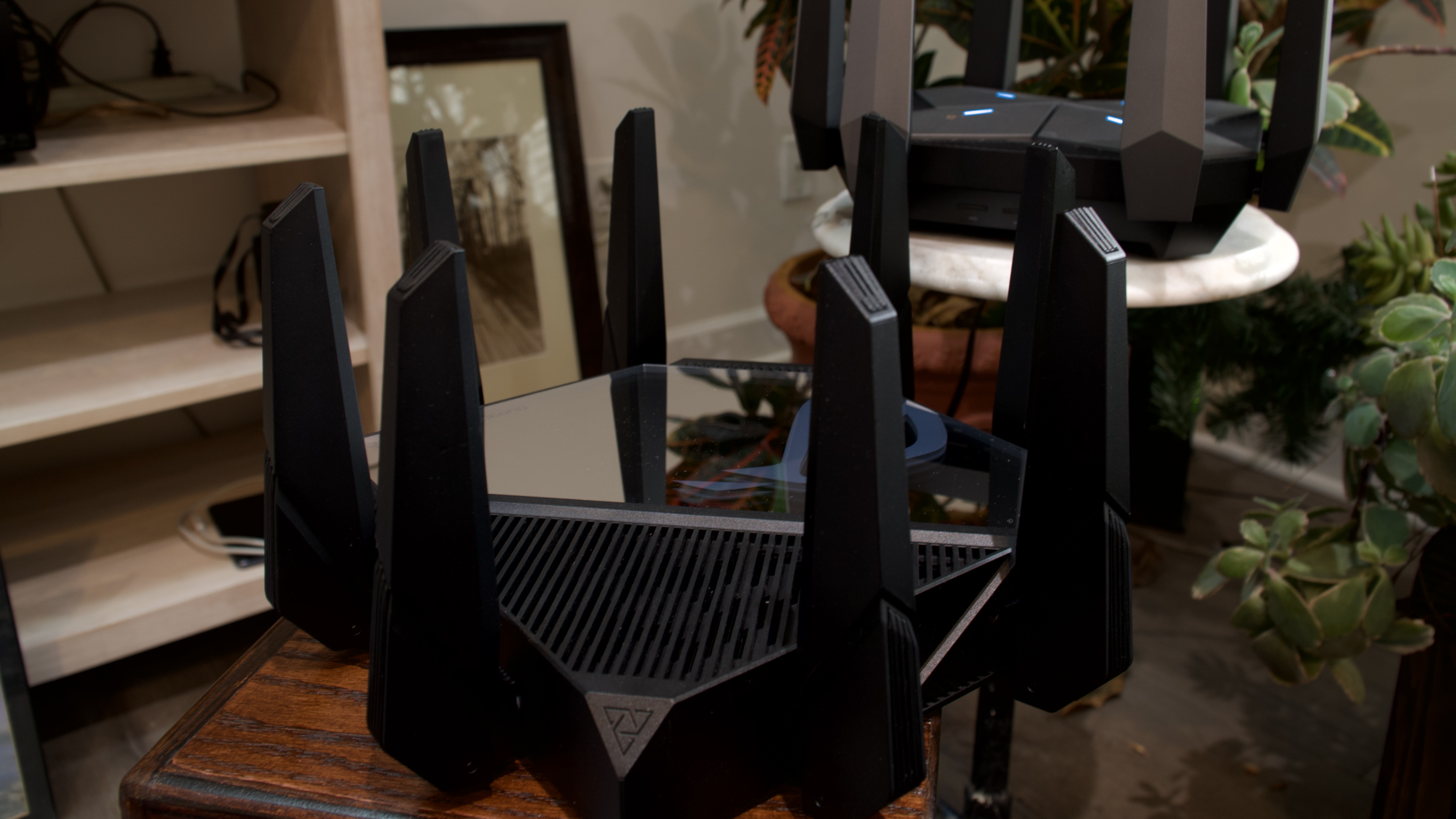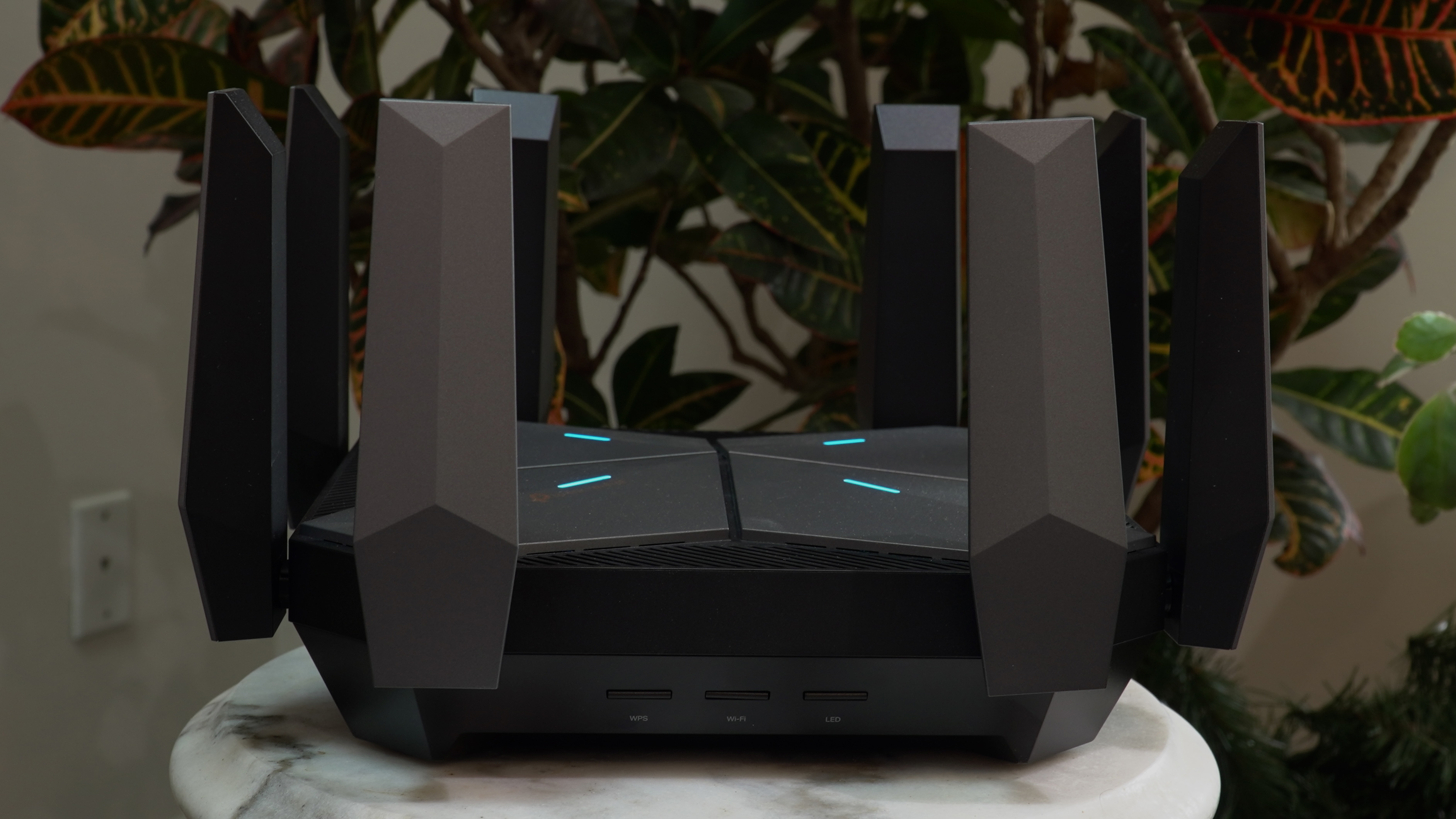Android Central Verdict
As I’ve come to expect from TP-Link’s high-end routers, the Archer AXE300 comes with all of the speed and capacity of the fastest routers around for less. And with no obvious corners cut and a nice build quality with good materials, it feels like the ultimate bleeding edge bargain.
Pros
- +
Fast quad-band AXE16000 speeds
- +
Dual 10Gb wired options
- +
SFP+ networking compatible
- +
Easy setup with the Tether app
- +
Solid advanced settings menu in the browser
- +
VPN Client and Server support
Cons
- -
OneMesh just isn’t as good as the competition
- -
HomeShield’s full features cost extra
Why you can trust Android Central
The truth is, the vast majority of us would be completely happy with an internet connection under 100Mbps for the next couple of years as long as it’s consistent and reliable. So why should anyone keep chasing faster speeds with evermore complex and expensive routers like the TP-Link Archer AXE300? I can rattle off the spec sheet and it all sounds very impressive, but what does upgrading to this new high-end WI-Fi 6E router enable you to do that couldn’t be done by the dreary gateway provided by your ISP?
For one thing, if you haven’t already, you can dive into the world of high-speed home networking. Whether you get it done with one of the best NAS systems or want to put together a cheap storage server with a 10Gbps NIC, being able to move massive amounts of data around your home opens up a world of options. If you’re a movie buff, you could save backups of your 4K HDR Blu-rays on a NAS for Plex and watch them on nearly any device without needing to put up with the limitations of streaming like banding on gradients or the weird blurry effect caused by compression and film grain.
Since the Archer AXE300 supports SFP+, you can use a fiber patch cable to put your (potentially) noisy server as far away from your home theater as possible. And since it’s fiber, you won’t need to worry about EMI and could even use the conduit you already have installed. After all of that, you still have an ultrafast router with enough capacity for multiple wireless devices running at full speed.
Another thing is congestion. In a dense residential area like an apartment building, the large number of neighboring Wi-Fi signals can destroy your 2.4GHz and 5GHz Wi-Fi speeds but a quad-band router will be able to take advantage of multiple chunks of the spectrum at once allowing you to get the best speeds possible. To add to that, there are many more available channels available at 6GHz than 5GHz and at present, much less traffic. If you’re fighting congestion and looking for the best Wi-Fi speeds possible, 6GHz may be your answer.
TP-Link Archer AXE300 review: Price and availability
The TP-Link Archer AXE300 was first available in October of 2022 with a suggested price of $599.99. This router has also been consistently on sale since it was released and is available with a $100 coupon on Amazon at the time of writing. While AXE16000 routers are still uncommon, the Archer AXE300 is the cheapest among them. You can pick it up on Amazon in the U.S. as well as TP-Link’s web store. You also have the option to split the cost into four payments on TP-Link’s store.
As far as packaging, the router is held firmly in place with two large chunks of foam. The router arrived in fine condition and felt well-protected. While foam is technically recyclable, the truth is that many people will simply chuck it in the bin. I would have liked to see more renewable or biodegradable packaging used instead of being left with a chunk of waste that’s big enough to use as a floatation device.
TP-Link Archer AXE300 review: What I like
The TP-Link Archer AXE300 isn’t perfect but it’s also not that far off. It has an AXE16000 quad-band Wi-Fi 6E connection with dual 10Gbps Ethernet ports. The wireless speed breaks down to 1148Mbps at 2.4GHz, two 4804Mbps 5GHz bands, and 4804Mbps at 6GHz. Both 5GHz bands and the 6GHz band support 160MHz connections so no matter which connection your device uses, you should get plenty of speed.
Get the latest news from Android Central, your trusted companion in the world of Android
Around the back, you get four gigabit Ethernet ports for your wired devices, a 2.5Gbps Ethernet, and two 10Gbps Ethernet ports. One of the 10Gbps ports can be used as SFP+ which uses a fiber patch cable rather than copper. This can allow for longer runs without losing speed or worrying about electromagnetic interference from electric lines. SFP+ is much more common in large buildings or businesses so it’s probably not going to get a ton of use, but if you’re looking for wired flexibility, it gives you a few more options for getting connected. You can even use it for your internet connection source if you’ve got a fast wired network already in place.
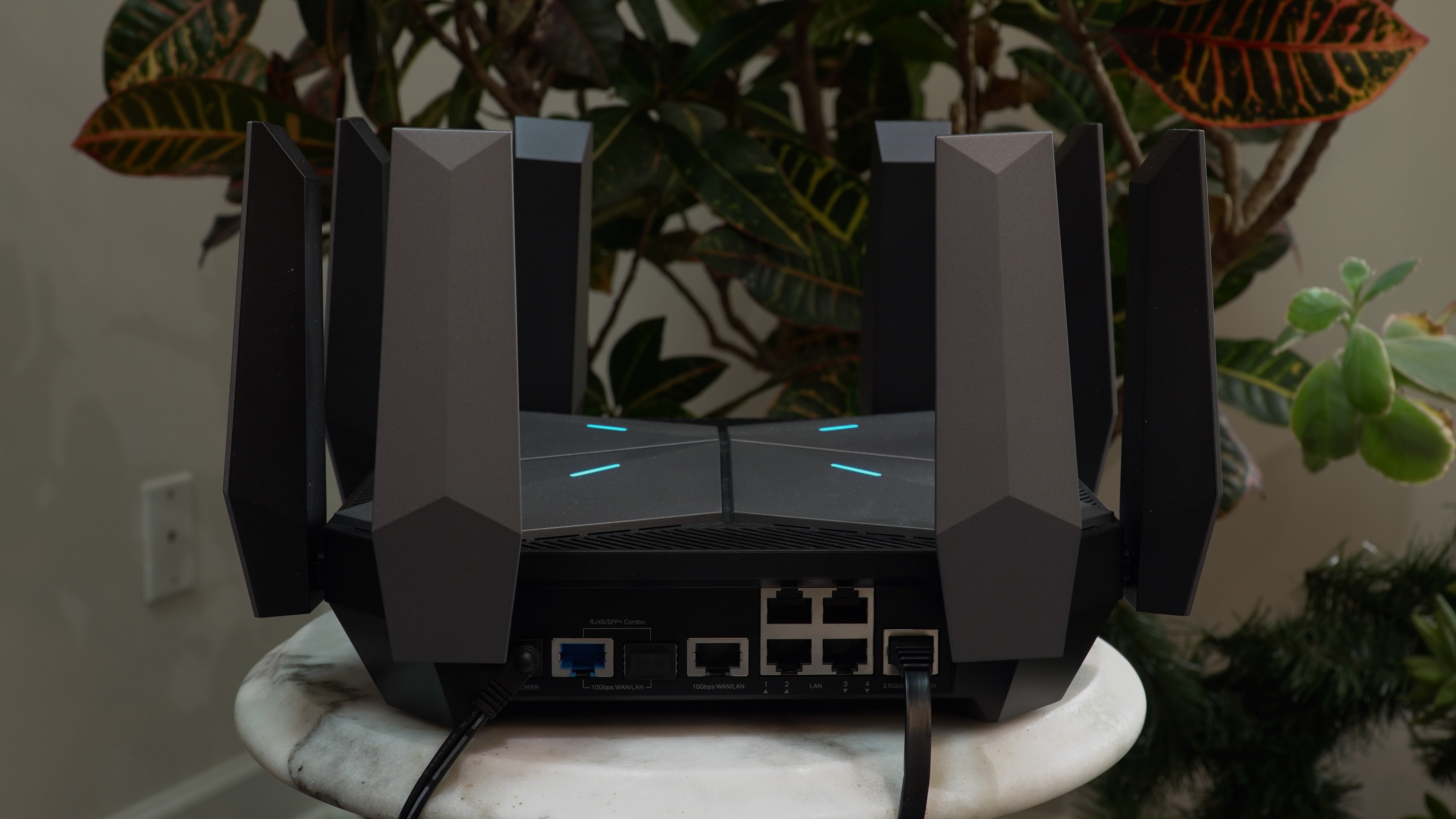
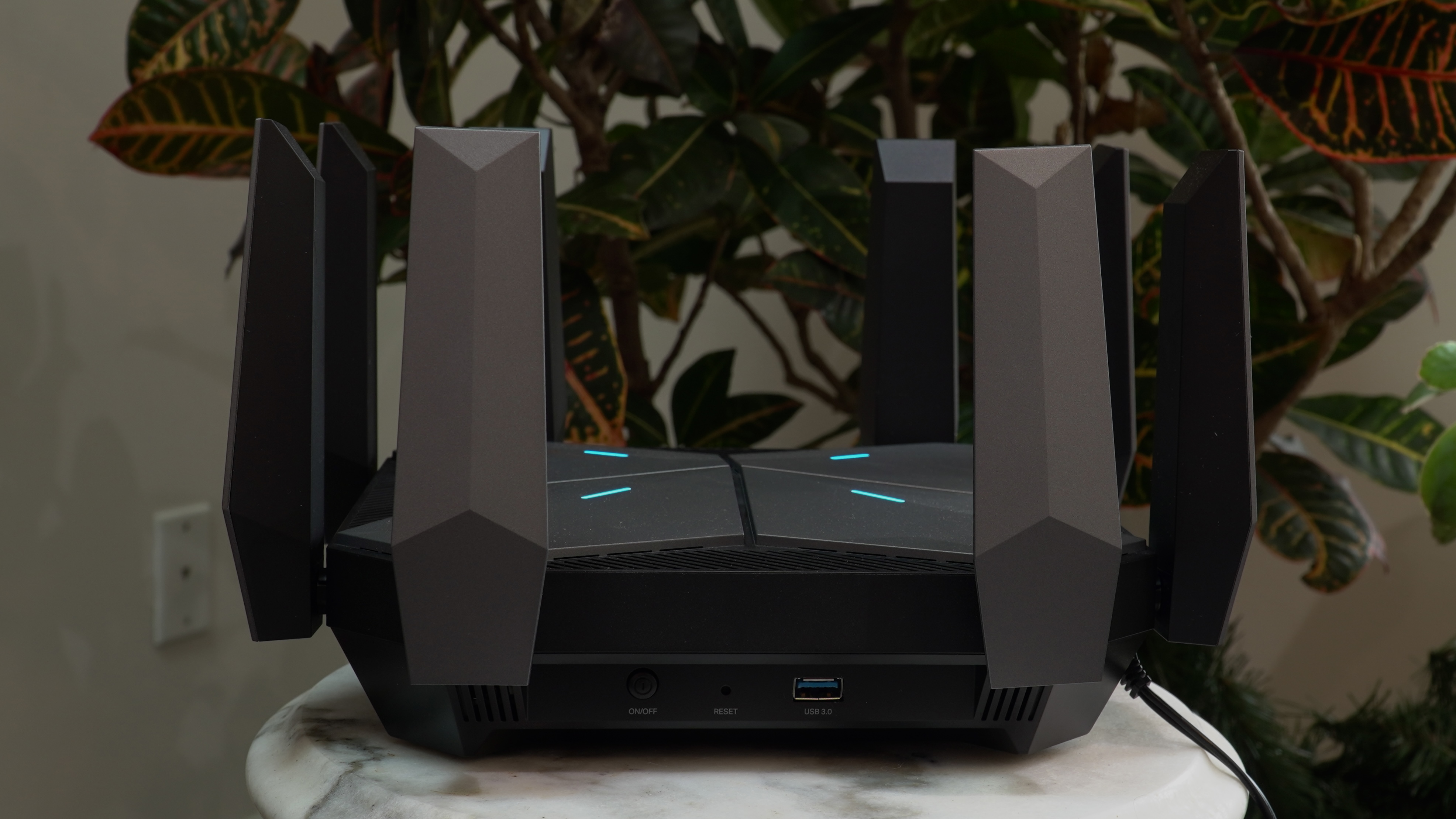
While I’d love to put this router through its paces with a multi-gig internet connection, I only have a symmetrical gigabit fiber option in my area. One thing to note is that I tested this router at its default settings as most people would use it. By default, OFDMA and MU-MIMO are disabled and the higher 5GHz band was set to 80MHz. These choices were likely made by TP-Link to maximize compatibility for older devices so if you have multiple fast 160MHz devices, it may be worth a trip to the advanced wireless settings to enable those settings.
Nevertheless, this router delivers fairly consistent speeds in all testing locations and even the 6GHz signal was stronger than I expected.
| Row 0 - Cell 0 | Living room (router) | Bedroom | Garage |
| Zenfone 8 (160MHz Wi-Fi 6) | 911/919Mbps, 923/911Mbps | 886/730Mbps, 888/590Mbps | 877/596Mbps, 913/729Mbps |
| Galaxy S20+ (80MHz Wi-Fi 6) | 704/755Mbps, 735/635Mbps | 320/351Mbps, 326/238Mbps | 652/260Mbps, 673/336Mbps |
| LG G8 (80MHz Wi-Fi 5) | 655/603Mbps, 685/588Mbps | 644/425Mbps, 552/286Mbps | 507/238Mbps, 355/276Mbps |
The Zenfone 8 has support for 160MHz connections with a top speed of 2402Mbps on both the 5GHz and 6GHz bands. This connection is double what many older Wi-Fi 6 devices, like the Galaxy S20+ will get with their 80MHz connections. The slower speeds on the Galaxy S20+ could be attributed to the router putting it on 5G-1 (about 5.2GHz) with the LG G8 being put on 5G-2 (about 5.8GHz) which is a bit more open in my area.
The LG G8 also has an 80MHz connection but with Wi-Fi 5. It’s apparent from these results that the main uplift with modern devices comes from better use of spectrum, and not necessarily being on the latest tech like Wi-Fi 6. I’m actually rather impressed by the performance of the G8’s Qualcomm FastConnect 6200 Wi-Fi chip and it reminds me that there’s much more to a phone’s chipset than the CPU and GPU.
That being said, the Zenfone 8 cleaned up in terms of overall performance and continued to do so at 6GHz.
| Row 0 - Cell 0 | Living room (router) | Bedroom | Garage |
| Zenfone 8 (160MHz Wi-Fi 6E) | 598/751Mbps, 617/574Mbps | 756/220Mbps, 738/330Mbps | 680/112Mbps, 683/155Mbps |
Wi-Fi at 6GHz doesn’t offer the coverage of 5GHz or 2.4GHz and that is apparent in the upload speeds in the two testing locations with at least one wall between the router. The first thing to crumble was the upload speeds but in reality, you’ve still got plenty of speed for just about anything. Overall, I was pleased with the 6GHz performance and in day-to-day usage on the Zenfone 8, I didn’t notice the speed issues. If you’re planning on using 6GHz Wi-Fi for larger backups though, you may need to get creative with finding a good line of sight to the router.
As with all TP-Link routers, the Tether app made setup a breeze and the Archer AXE300 is even easier than normal thanks to Bluetooth setup. Essentially, my phone connected to the router using Bluetooth in order to complete the initial configuration. This was nice because I didn’t need to scan any QR codes or type in temporary passwords. It also worked flawlessly and I was up and running in minutes.
The Tether app has plenty of settings for most people with the basic Wi-Fi settings that most people need within a few taps from any screen. You can also set up HomeShield from here. HomeShield is TP-Link’s security and parental controls software package with a few features for free and some more advanced features locked behind a subscription. While it’s a bit disappointing to see TP-Link still asking for more money after you’ve paid for a $599.99 router, the features are nice and work well.
If you’ve got adolescent kids that are starting to get creative with their internet searches, it may well be worth the $5.99 per month for you to upgrade to the full HomeShield package. Still, it’s hard to ignore the fact that ASUS gives you similar controls for free, though the price delta to ASUS’ competing router is more than the cost of a year of HomeShield. Two years if there’s a good discount available.
TP-Link also includes access to advanced Wi-Fi settings in a web browser so if you like to get more into the details than the app allows, you’ve got options. The app will even provide a link to this page if you’re having trouble working out the router’s IP.
TP-Link includes a basic QoS feature that allows you to set devices as high-priority. This is good for those that share a connection with multiple family members and can keep your most important devices, like a work laptop, running smoothly when there’s a lot of usage at one time. TP-Link has also included VPN Client mode on this router so you can add VPN connections and assign them to the appropriate devices.
TP-Link has another trick up its sleeve with OneMesh. OneMesh allows you to add some TP-Link Wi-Fi extenders in mesh mode. Unlike a traditional extender, you won’t need to add multiple access points to your device. Your device will automatically connect to the strongest OneMesh node.
TP-Link Archer AXE300 review: What should be better
One odd thing about TP-Link’s default settings is that both MU-MIMO and OFDMA are set to off by default. These two acronyms represent technology that helps your router manage multiple devices at once and sidestep congestion to keep connection speeds high in challenging conditions. TP-Link has likely left these off by default to improve compatibility with older or cheaper Wi-Fi devices, such as smart home tech. I would have preferred a separate IoT network by default like we see on some newer routers from Netgear like the Orbi RBKE963.
I also don’t love that HomeShield adds yet another subscription to my card if I want to use all of its features. While it’s priced lower than some of the competition, the genuinely useful features it brings, like advanced parental controls and improved security, just aren’t worth it to me. If HomeShield offers what you’ve been looking for, it’s a solid value, but for me, a router is something I only want to pay for once.
TP-Link Archer AXE300 review: Isn’t Wi-Fi 7 right around the corner?
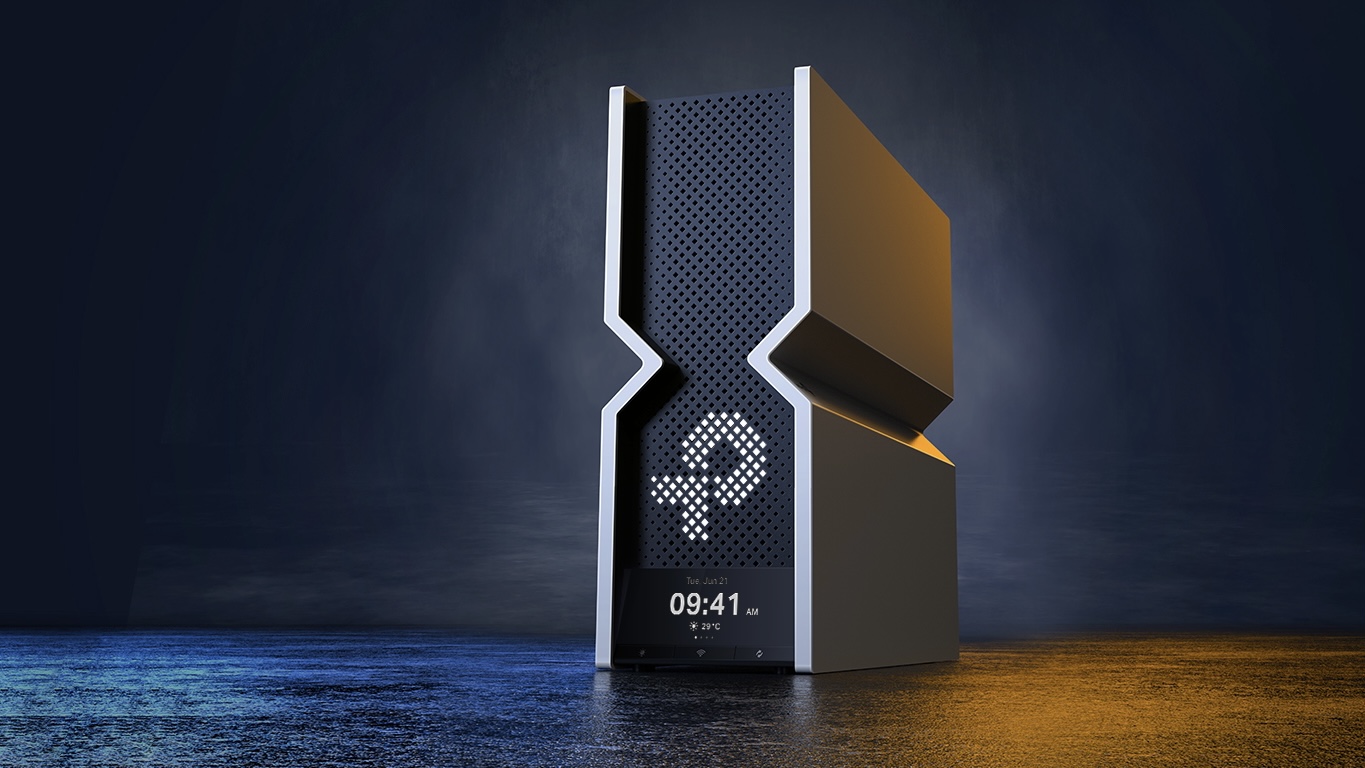
If you follow Wi-Fi tech, you’ve likely been seeing a lot of announcements about Wi-Fi 7. Wi-Fi 7 is a pretty big jump from Wi-Fi 6 and Wi-Fi 6E but for most people, it won’t make sense for quite a while. Wi-Fi 7’s best trick is being able to use much more 6GHz spectrum at once making for incredible speed promises, but for the devices most of us own now or will buy in the next year or so, it won’t mean much.
If you want to be on the bleeding edge, Wi-Fi 7 is right around the corner, but keep in mind that you’ll have to pay a premium to get in on the tech early and if the launch of Wi-Fi 6E is anything to go by, it might take a few months conservatively for the software to catch up. And really, the TP-Link Archer AXE300 and its competition are plenty fast for the vast majority of us, even those with 5Gbps internet connections or higher.
TP-Link Archer AXE300 review: Competition
If you’re in the market for an AXE16000 router and the Archer AXE300 isn’t quite doing it for you, the ASUS ROG Rapture GT-AXE16000 might be a better fit with more of its features targeting gamers and similar overall performance. As I saw in my ROG Rapture GT-AXE16000 review, the speeds are great and the build quality is second to none, but it is quite a bit more expensive with a suggested price of $699.99. Some people will prefer ASUS’ software which allows for easier mesh expansion with any AiMesh-compatible router and a more robust QoS that allows for more in-depth prioritization. ASUS also includes free parental controls and security enhancements with AiProtection.
If you want top speeds without getting into the complicated advanced settings, the Orbi RBRE960 from Netgear is another quad-band AXE16000 router that’s built with simplicity and mesh expansion in mind. In fact, my Orbi RBKE963 review looked at this router as part of a mesh kit and found it to be fast, but not the most performant mesh in congested areas due to the 5GHz backhaul. That being said, the Orbi RBRE960 router that makes up the core of the mesh has everything most potential customers are after including 10Gbps Ethernet support for WAN and a 2.5Gbps port for LAN.
TP-Link Archer AXE300 review: Should you buy it?
You should buy it if...
- You have internet speeds over 1Gbps.
- You have a fast NAS system with 10Gbps networking.
- You have dozens of wireless devices in your home.
You shouldn't buy it if...
- You have internet speeds under 1Gbps.
- You want robust parental controls for free.
- You want flexible mesh expansion options.
The TP-Link Archer AXE300 is one of the best routers you can buy when it comes to speed and price alone. When you add in the excellent design and expansion options with the 10Gbps networking, this router can stand toe-to-toe with the most expensive routers available like the ROG Rapture GT-AXE16000 and the Orbi RBRE960. It looks great in its dark matte gray plastics with the subtle blue accent lights reminding you that this is a high-end router.
If you want one of the fastest routers you can buy today with support for the kind of devices you can buy today, the Archer AXE300 is a great choice. While its software features feel a bit lacking when you bring in the ASUS options, at $100 less, it still feels like an excellent value. I must reiterate that most people who don't have an internet connection that can fully utilize this router would be perfectly happy with one of the other (cheaper) best Wi-Fi 6E routers.
In my time using this router, my connection has been solid and reliable. I’ve also never felt myself wanting for speed and all of my devices connected to sensible bands right away meaning I never even had the urge to disable Smart Connect.
In order to make sense, a router needs to be perfectly reliable regardless of its speed. In my time testing the Archer AXE300, my connection quality was excellent from streaming 4K to some light online gaming. I have no reservations in recommending this router and if security software and parental controls aren’t your top priority, this is an excellent router for those looking for excellent speeds and reliability. I look forward to using this router as my daily driver for quite a while.
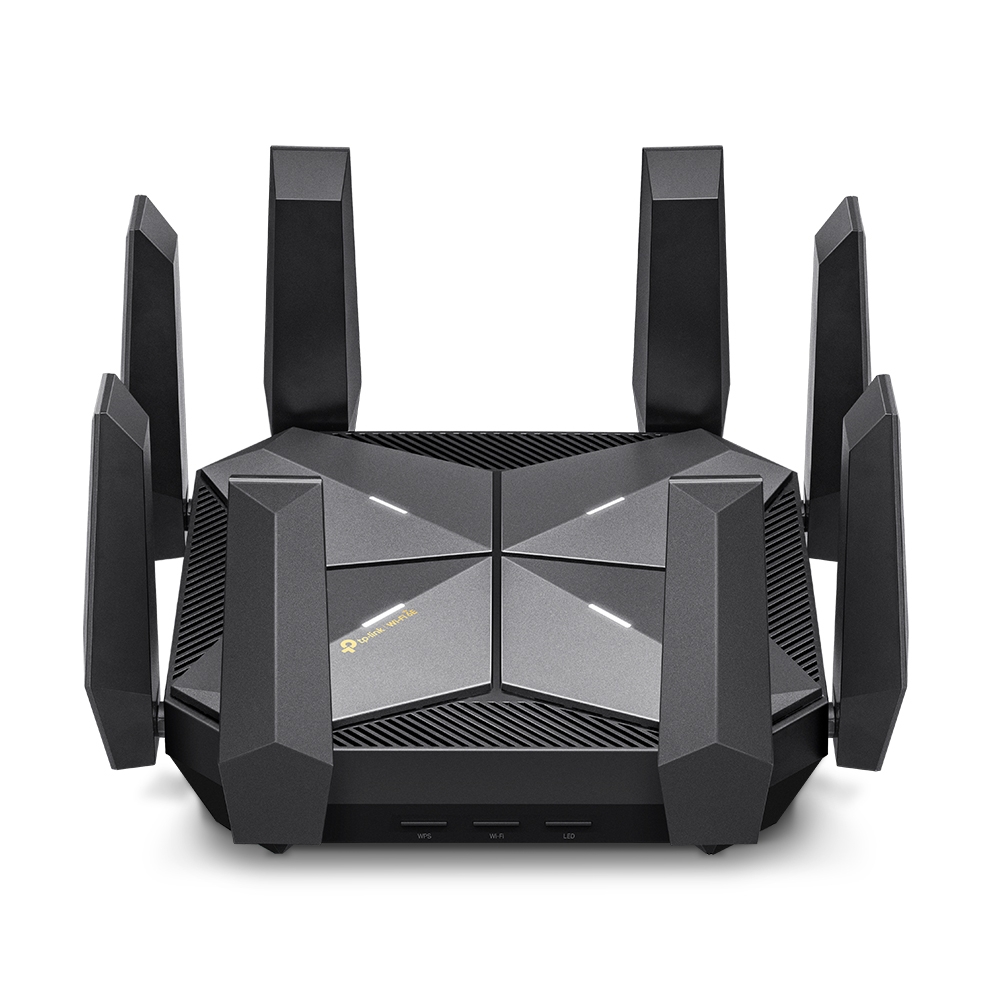
All of the speed you need
This Wi-Fi 6E router has all of the speed any home needs and more thanks to its dual 5GHz bands, 6GHz band, and 10Gbps wired networking. It's also the most affordable AXE16000 router you can get with few meaningful corners cut to get the price down.

When Samuel is not writing about networking or 5G at Android Central, he spends most of his time researching computer components and obsessing over what CPU goes into the ultimate Windows 98 computer. It's the Pentium 3.
